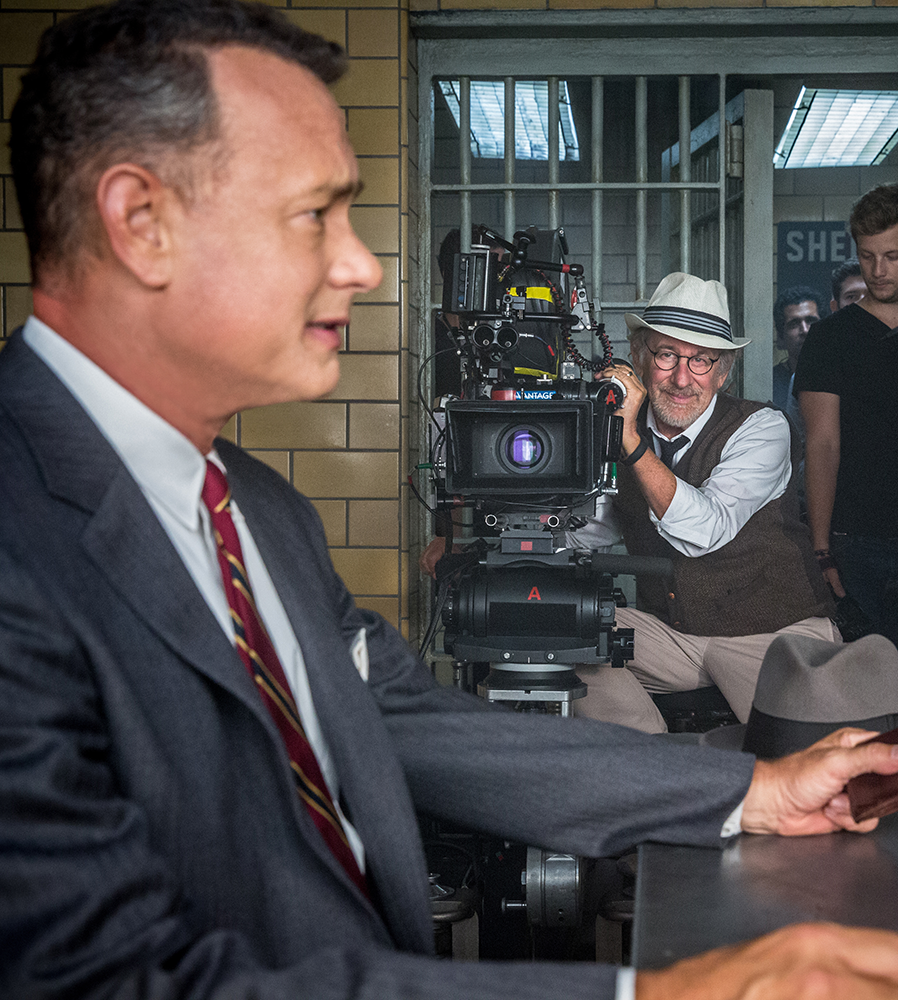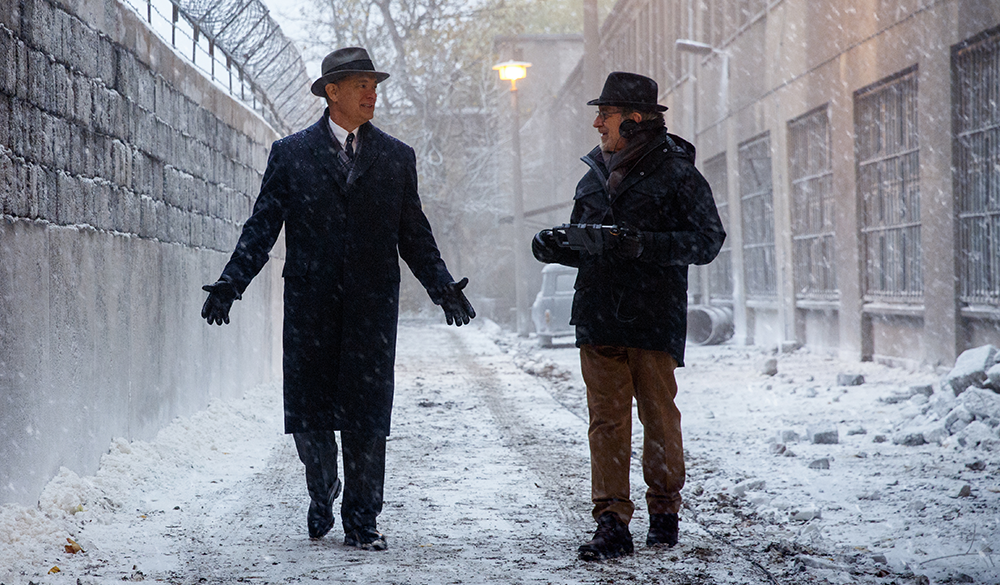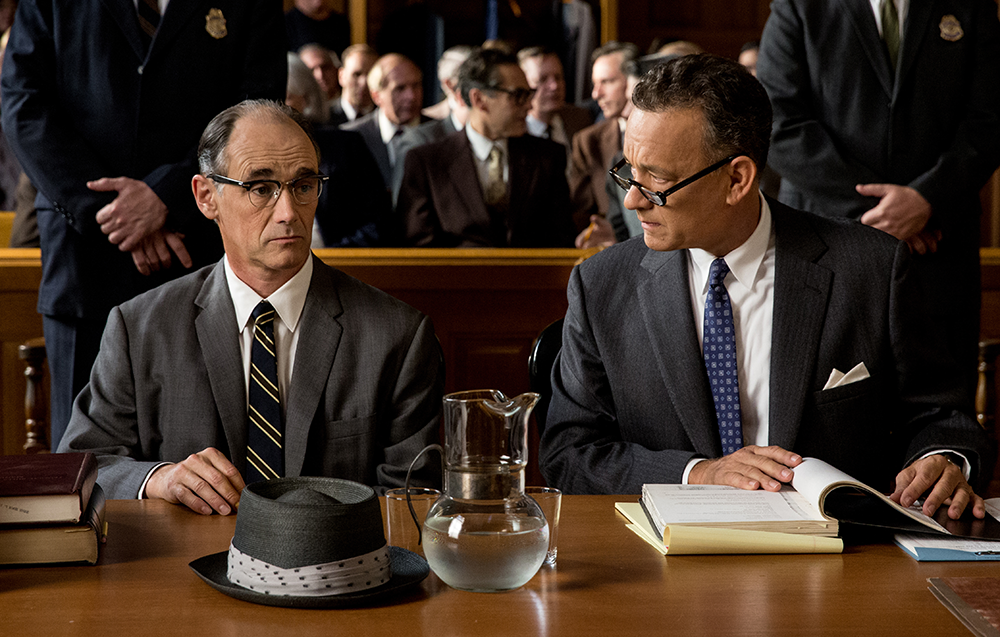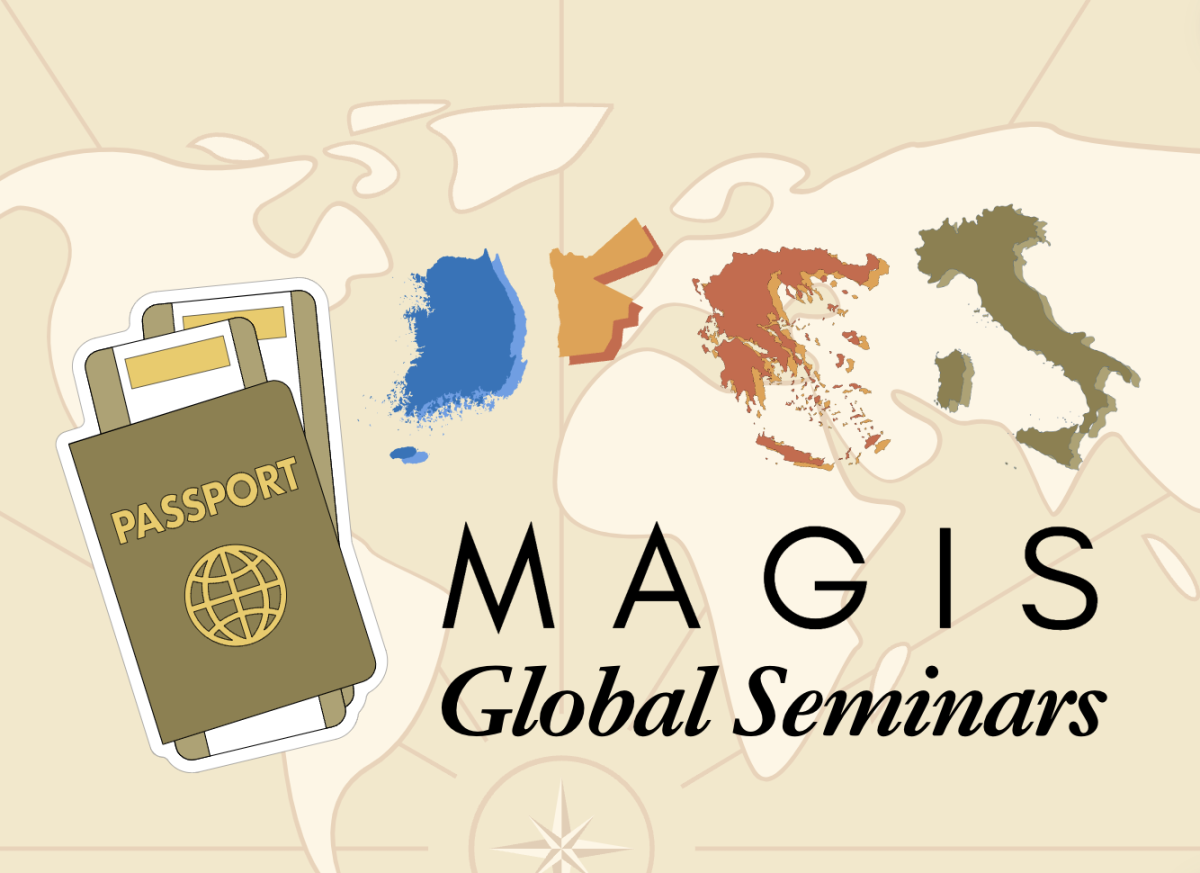
Given his extensive body of work, it is no question that Steven Spielberg is often referred to as the greatest filmmaker of the modern age. Having challenged filmic cliches and pioneered special effects at the vanguard of Hollywood over the past 40 years, Spielberg films have very little in common, often ranging from blockbusters to historical dramas and most everything in between.
Spielberg’s latest film, “Bridge of Spies,” which premiered last Friday, follows James Donovan (Tom Hanks) as he acts as the lawyer for a captured Soviet spy at the height of the Cold War.
Last week, The Hoya participated in a conference call with 36 other reporters and Spielberg, who discussed the film and his career. Twenty-four reporters asked questions, including The Hoya.
How much of a role do you play as an educator when directing historical fiction?
Well, to begin with, my imagination has always been my best friend, especially when I was younger and making all those early movies, and then when I became a father science fiction is something I love and it’s something I completely and periodically return to. But when I became a dad for the first time, life took a very sort of serious turn and I just became concerned about something I was never concerned about, which was the future of my children because I didn’t have any children to be concerned about their future. When I started having kids it made me look ahead and then that forced me to look back ’cause I’ve always loved history. I excelled in history at school, probably not much else. I was a good history student. I’ve always said to my kids that you can’t go forward unless you know where all of us collectively have been and so I’ve always had this interest in historical subjects, in biographies. I never really turned to that until I got serious about being a parent.
How do you define the balance between creative license and accurate portrayal when we make films like this?
At the beginning of our movie, we don’t say the true story, “Bridge of Spies.” We say inspired by true events. I make a distinction between a story like “Schindler’s List,” which is virtually true from cover to cover and even a film like “Lincoln,” which is virtually true from cover to cover to a film like “Bridge of Spies,” where every single event is true and it actually happened. In order to make it more tense and more suspenseful, I needed to take license with the order of sequences in order to truncate or to condense a five year story into something that only feels like it’s taking place over six or seven months. And it’s very obvious that the audiences that know the law that the Supreme Court doesn’t just take a case and put it on its docket and give you an audience or allow you to argue your case in the Supreme Court a couple of weeks after the lower court has ruled. That never happens and I just hope the audience understands and goes along with the fact that I do take license in scenes like that and also there were other things that happened that didn’t exactly happen the way they did but everything really happened. The Supreme Court speech he gives in the end is word-for-word in many regards what he actually said and Donovan actually had a terrible cold. He caught it the second he got to East Germany and was deadly ill throughout all the negotiations. So little details like that, that actually happened and their house was shot at. The Donovan house was shot at and these things all happened but nobody had tape recorders and we had pretty much to make up a lot of the dialogue because there wasn’t a record of what people said around the dinner table, for instance.

How is directing historical films different from directing pure fiction?
Well, it’s a lot easier telling stories that are pure fiction because I can just let my imagination run away with me and I’ll just follow my imagination to the end of the project. But when I’m making movies about history or about real people in that history it, it limits my imagination and my imagination turns more toward where I should put the camera to make the scenes cinematic. But the content of the scene itself I need to leave closer to the way history has told us things actually happened.
What do you think has changed about the types of stories and characters that draw you in?
Well, in the early part of my career I was always drawn in by characters. Everything I ever did was character-based. Maybe my first movie about the truck chasing the car, it’s called “Duel,” even though it’s a big scary truck and a little red car … there would be no story if there was a human being we cared about driving the little red valiant. And so all of my movies have really been about the characters. Throughout my earlier concepts or big notions for movies in the ’70s and ’80s sometimes upstage the characters that were really making those stories believable and yet a lot of credit was going just for the concept. Dinosaurs and aliens landing in Wyoming, sharks hunting the waters off Amenity Island; I mean those were big broad movie concepts, but none of those films would have succeeded without the characters that populated them and my feeling today as I’ve gotten older and the concepts have maybe gotten smaller. They’ve only gotten smaller because the characters have gotten bigger and I’m much more interested in focusing my attention on really interesting people, like the character of Rudolf Abel and the character of James Donovan played by Tom Hanks and Mark Rylance. Those are the kinds of stories that really interest me today.
Has the nature of the craft changed so that you’ve done something that you’ve never done before?
Every once in a while I do a film– not every once in a while. Quite often I do a movie like I’ve never [done before]. I do a movie, the genre of which I’ve never done before. I never did anything like “Saving Private Ryan” before. I never did anything like “Schindler’s List” before. I never made a movie like “Jaws” before or “Raiders of the Lost Ark.” There were so many movies that for me were complete firsts. There were other movies like the sequels to the adventure movies or the sequels to the dinosaur movies that are no less challenging but the originality and concept is not as exciting as or as dangerous as the first ones were. So I’m more challenged by a genre like “Bridge of Spies” because I’ve never done anything about spies before. I’m [more] challenged by something like that than I am by something that I’ve done versions of several times in my career.
Your films often have motifs of ordinary people in extraordinary circumstances. What draws you to these characters?
What draws me to the characters are the fact that they are all of them unaccustomed to the jobs they’re doing. Even Abraham Lincoln had never run into such a divided Congress as we are all experiencing … In our current events, the mission that Captain Miller was given to go find some kid whose brothers were killed and send them home … that was something he had never experienced before. This insurance lawyer suddenly being invited to defend the most unpopular person of his time in this country, Rudolph Abel, and subjecting his family to tremendous scrutiny and criticism and even danger. All of these stories about characters experiencing something profound and dangerous for the first time really hooks me as a filmmaker and makes me want to tell those stories.

What makes a director want to work with an actor on multiple movies? Are there hurdles you have to overcome so as not to repeat yourself?
Look, I just feel lucky that Tom wants to work with me so many times. He’s clearly and arguably one of our greatest actors of this or any generation. He is a staple of the people working together. He’s trustworthy. Audiences trust him and audiences want to hear how he tells a story. And also Tom is a bit of a chameleon as Daniel Day Lewis is and I had the honor of working with him on “Lincoln” and that is they’re able to completely step out of their own personalities and into the personality of someone … called together by one or two writers or by a piece of history. And so Tom has so much versatility from the experiences I’ve had with Tom from Captain Miller to Viktor Navorski in “The Terminal” and then from Carl Hanratty in “Catch Me If You Can” to the bulldog, negotiator of James Donovan in “Bridge of Spies.” Those are four very different people and I’m very lucky that I know an actor that can play so many different parts and I would love all those different parts to be in my movies.
What makes Tom Hanks a uniquely talented individual to work with?
Well, you know, Tom’s one, certainly I’ve been blessed with some great actors in my long career and I’ve never really had to work with an actor who I was friends with first and there was jeopardy for me in getting into the professional world with somebody who I was very close to in the personal world. And Tom and I and his family and my family were very close because I actually had — my company had produced several of Tom’s movies in the 1980s and then Tom and I met but we stopped doing business together. We just became good friends.
So when I first made my first movie with Tom, as a director, “Saving Private Ryan,” we were both a little bit nervous but we worked together almost like we were sharing a brain and it’s been that way on the next three films following “Saving Private Ryan.” And one of the happiest experiences I’ve ever had was with Tom was on this last film, “Bridge of Spies,” and it’s simply because Tom is an honest actor, which means that he doesn’t have to act.
If he understands the character, he exists in clothing and in the persona of that character without having to work very hard. It doesn’t mean he’s not a hard worker. It just means when Tom knows a character he becomes that person the same way Daniel Day-Lewis became Abraham Lincoln and I’m just blessed to work with actors like that, that can completely drop who we think they are and become totally different people.
How do you manage to keep people’s attention without conforming to cookie cutter-style movies that are becoming big?
Sometimes I will conform to it like when I produced a movie like “Jurassic World.” We’ll conform, for instance to the first “Jurassic Park” and design a film which is tonally very much like the movie I directed in 1993 and sort of trade up on the nostalgic factor. It’s sort of strange the way my process is — I think — a little bit unique in that if a story speaks to me, even if it doesn’t speak to any of my collaborators or any of my partners who look at me and scratch their heads and say, “Gee, are you sure you want to get into that trench for a year and a half?” My litmus test what really, the more I hear people saying, “Are you sure want to get into that genre and tell that story?” I love people challenging me that way because it’s a real test about my own convictions.
The more I can stand up, the more I can be the standing man of my own life and take a stand on a subject that may not be popular but I see it in a certain way that I would be proud to add that to the body of my work. That’s pretty much the litmus test that gets me to say “Yeah, I’ll direct that one.”
This interview has been edited for clarity and condensed for print.



















